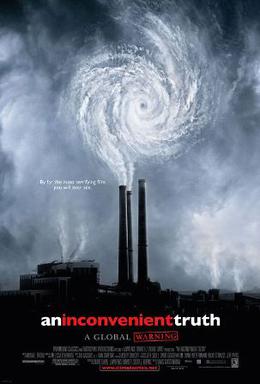As
an assignment, we had to watch this documentary and the answer a series of
questions. These are the questions and their respective answers:
1. What image
started the modern day environmental movement?
"Earth
rise," which was a picture taken from the dark side of the moon. 18 months
after the picture was taken, the modern environmental movement had begun.
2. What is
considered the most vulnerable part of the earth system?
The
most vulnerable part of the earth is the
atmosphere.
3. Relatively
speaking, compared to the earth, how thick is the atmosphere?
The
thickness of the atmosphere compared to the Earth is the same as the thickness
of a coat of varnish on a big globe (relatively speaking).
4. How can trapping
infrared radiation by the earth’s atmosphere be a GOOD thing?
It
is a GOOD thing because it keeps the temperature of the earth within certain
boundaries that are relatively constant and livable.
5. How can trapping
infrared radiation by the earth’s atmosphere be a BAD thing?
It is a BAD thing because the CO2 thickens the atmosphere,
thereby, more of the outgoing infrared gets trapped, which can have
negative consequences such as an increase in the Earth's temperature.
6. What
percentage of people depend on glacial melt for their drinking water?
40%
of the world's population depends on glacial melt for their drinking water,
which represents
7. Why is studying
ice cores important?
Because
they can tell us how much CO2 was in the atmosphere the year the bubble fell,
and they can help measure the different types of oxygen isotopes at time as
well. Also, you can use them as a very precise thermometer that
can tell you the temperature of the year when the bubble of CO2 was
trapped in the ice.
8. What is the
relationship between carbon dioxide (CO2) and atmospheric temperature?
The
more carbon dioxide the warmer the weather, and vice versa. When the
temperature is higher, more heat from the sun gets trapped in the atmosphere.
9. Over what time
period have the hottest 10 years on earth occurred?
Over
a period of 14 years (from 1990 to 2005), the 10 hottest years on Earth
happened, being 2005 the hottest one of all.
10. As the water temperature under a
hurricane increases, what happens to the wind velocity of the
storm?
As
the temperature increases, the wind’s velocity of the hurricane increases along
with the moisture content. For instance, hurricane Katrina got considerably
faster and more dangerous when it got to New Orleans because of the warmer
temperatures.
11. What has happened to Lake Chad
over the years?
It
has dried up to almost completely over the past few decades.
12. How much of the suns radiation
gets reflected by ice?
More
than 90% bounces off into space when it gets reflected into the ice, but the
water around the ice does retain heat, which makes the ice melt even faster.
13. What redistributes energy from
the equator to the north and south poles?
Ocean
current and wind current patterns distribute energy around the world. If the
weather were to go up considerably, these patterns would get disorganized,
thereby, bringing terrible consequences.
14. If
the ice sheets of Western Antarctica were to melt, approximately how much would
sea level rise?
If
the ice sheets of Western Antarctica were to melt, the see level would rise 20
feet. Also, if Greenland were to melt, it would raise the sea level by another
20 feet.
15. List
the three factors causing the collision between civilization and earth
1.
Population: The more population, the more pressure is put on Earth (specially on
poorer nations). Also, more people means more food and water demand, and more vulnerable
natural resources such as forests.
2.
Technology: The newest technologies invented by mankind have progressed immensely,
but our old habits have stayed the same. This combination has brought bad
consequences. People need to move forward along with the technological
advancements.
3.
People’s way of thinking. People need to react to the problem instead of
waiting for all of it to happen. Also, as I stated before, people can just
stay the same while the woirld around them progresses.
16.
Approximately, what percentages of global carbon dioxide emissions come from
forest fires?
30%
of global carbon dioxide emissions come from forest fires.
17.
What country is the largest contributor of greenhouse gases into the
atmosphere?
The
United States is the largest contributor of greenhouse gases. As of 2006, they
had the largest per capita emissions of CO2 in the world.
The
United States has the lowest government standards for gas mileage of
automobiles. However, the state of California are implementing laws to have
better standards for gas mileage. Other countries such as China and Australia
have much higher standards.
19.
Which two nations have not signed onto the Kyoto Protocol?
As
of 2006, United States and Australia were the only two nations that have not
yet signed onto the Kyoto Protocol. Though, many cities in the US have started
campaigns to support this project.
Here's
the link to the documentary if anyone wants to watch it:





No comments:
Post a Comment